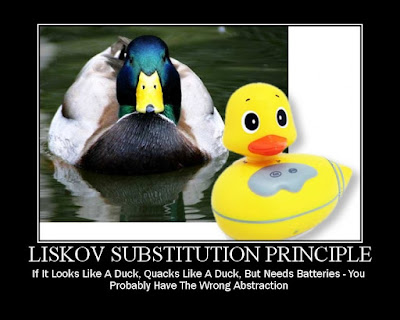S.O.L.I.D principles

The S.O.L.I.D principles of Object Oriented Design( OOD ) include these five principles. Lets expanded the acronyms: S - Single-responsibility principle O - Open-closed principle L - Liskov substitution principle I - Interface segregation principle D - Dependency inversion principle # Single-responsibility principle ( S.R.P ) A class should have only one job. O ne and only one reason to change. Examples of responsibilities : Persistence Validation Notification Error Handling Logging Formatting Parsing Mapping # Open-closed principle ( O.C.P ) A class should be open for extension, but closed for modification. # Liskov substitution principle ( L.S.P ) Subtypes must be substitutable for their base types. In mathematics, a Square is a Rectangle . Indeed it is a specialization of a rectangle. The "is a" makes you want to model this with inheritance. However if in code you made...
